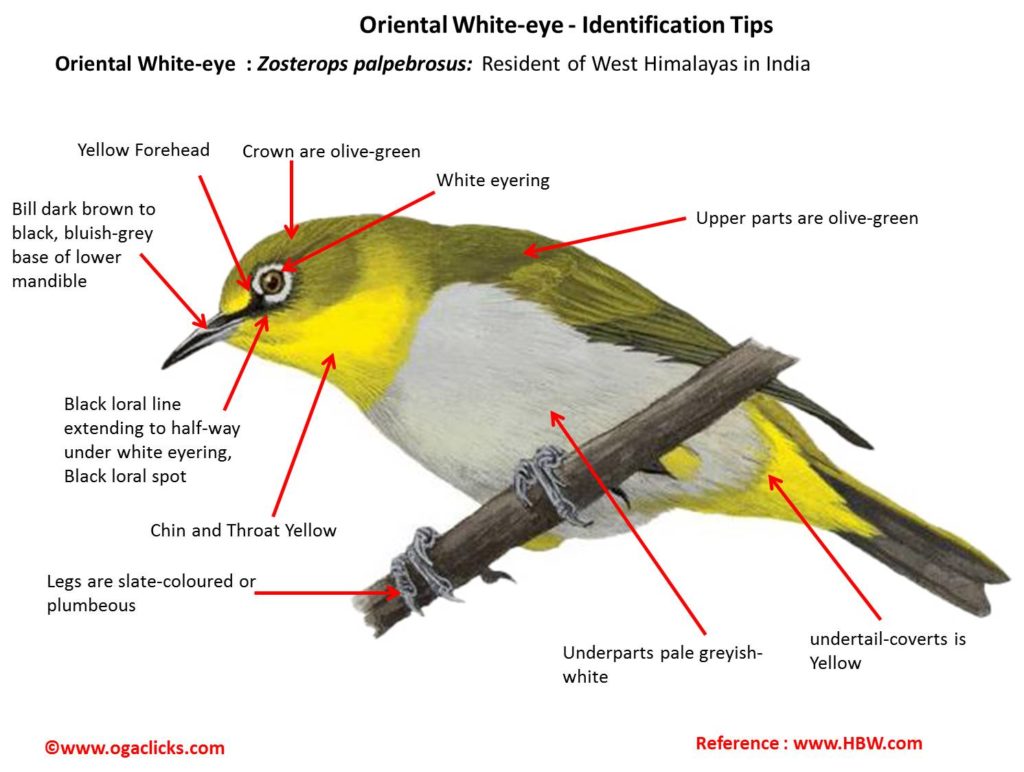Oriental White-eye

Oriental White-eye Zosterops palpebrosus
Etymology:
- Zosterops : Greek word zoster – belt, girdle; ops – eye
- Palpebrosus : Latin word for “having prominent eyelids” derived from palpebra – eyelid
Vernacular Name: Hindi: Baboona, Pun: Sunakkhi, M.P: Motichur, Cachar: Daotisha-gophu-pi, Guj: Babuna, Swethnayana, Mar: Chashmewala, Ta: Vellaikanni, Kannadikuruvi, Pu-kuruvi, Te: Vellakanti, Mal: Vellikkani, Sinh: Mal kurulla
Distribution in India: Breedsin Himalayas, winter visitor in plains and foothills.
Description: Size of 10-11cm.the nominate race has forehead and supraloral region yellowish, black loral line extending to half-way under white eyering, latter broken at front by blackish spot; crown and upperparts olive-green, rump more yellowish; flight-feathers and tail blackish-brown, the former edged with olive-green; chin, throat, upper breast and undertail-coverts yellow, remainder of underparts pale greyish-white, sometimes with yellow mesial longitudinal streak over abdomen; iris yellowish-brown or brown; bill dark brown to black, bluish-grey base of lower mandible; legs slate-coloured or plumbeous. Both the sexes look similar.
Habitat: It is found in deciduous forest, broadleaf evergreen/semi-evergreen forest and swamp-forest, also forest edge, secondary growth, woodland, farmland, thickets, all zones of mangroves, scrub and wooded cultivation and coastal scrub of all kinds. Found from plains to 4000m.
Food Habits: It eats small buds, seeds, fruits and nectar and insects. It forages by hover-gleaning.
Breeding Habits: They breed in May- June in India. The pair-bond is long-lasting. The nest is built by female, or by both sexes, taking 4–6 days. The nest is a delicate-looking, thin-walled tiny cup, woven from vegetable floss, strengthened with spider webs, moss, animal hair and fine grass strips, suspended from bifurcating horizontal twigs, or even leaf petioles at end of twig, and often small enough to hang between two adjoining leaves or above ground in a small bush, shrub or bamboo thicket. They lay a clutch of 2-4 eggs. The incubation is done by both parents for a period of 10-11 days. The fledging period is 10-11 days. The fledglings are totally dependent on parents for 10–14 days.